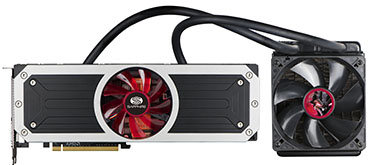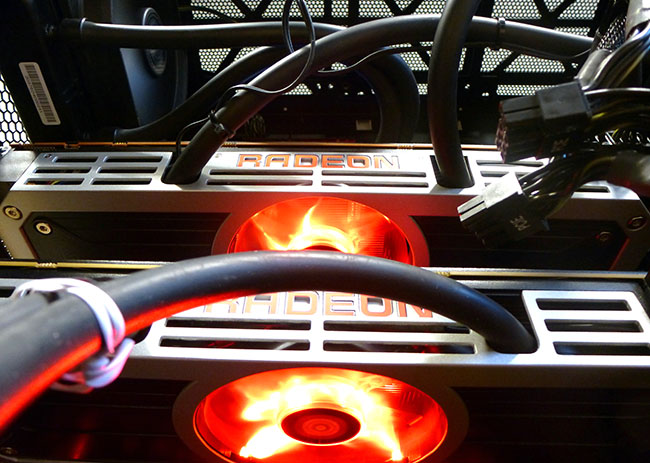Introduction
AMD took a modicum of umbrage at our review of the Gigabyte WaterForce graphics behemoth. Sure, three overclocked GeForce GTX 980 cards are undeniably fast and offer good gaming at the ultra-enthusiast 4K resolution, they said, but, priced at an eye-watering £2,499, WaterForce hardly represents value, right?
The value sentiment certainly rings true, especially as a trio of air-cooled GTX 980s can be purchased separately for under £1,300. Yet there's now reasonable value in this extreme segment from the AMD camp. Savage price cuts on the dual-GPU Radeon R9 295X2, now available for sub-£500, brings it very much into play. A single Radeon R9 295X2 puts up a good showing against the three-GPU WaterForce, we noted, so what could two do? A total of four R9 290X-like GPUs for under a grand is more like it, and AMD partner Sapphire obliged by seeding us a second card for four-way CrossFire shenanigans.
Toeing the AMD reference line to the letter, Sapphire's beefy card uses the same cooling as the original. The differences are only as deep as the sticker, really, as all partner Radeon R9 295X2s are a direct copy of the AMD blueprint. This is no bad thing in our book as the AMD card works well and cools efficiently. Keeping things tidy, integrating an XDMA engine for CrossFire duties precludes the use of the usual bridge when connecting cards together.
Let's throw some big numbers out at you. A couple of these cards combine to house a mind-numbing 11,264 cores split over four GPUs. Each GPU has access to its own, non-shareable pool of 4GB GDDR5 memory operating at an effective 5,000MHz. The core speed opportunistically boosts to 1,015MHz, and we observed each GPU achieving that speed in all of our benchmarks. Heck, there's 23TFLOPS of potential performance just waiting to be released.
Cooled by a 120mm radiator plumbed with a 38mm-thick fan, housing two of these beasties requires a large chassis that, in the case of our Corsair Graphite 780T, requires the removal of the drive-tray cages. Each card weighs north of 1kg and is built like the proverbial tank. Measuring the full 12in long and taking up the familiar dual-slot form factor, two should really be paired on a high-performance Intel X99 platform.
It ain't a pretty build, but it sure is fast
A hodge-podge of tubes emanate from the two cards and Zalman liquid cooler. Thankfully we have an Antec HCP-1300 Platinum power supply on hand to dole out massive amounts of 12V performance; anything smaller is asking for stability problems.
What we're really interested in is if four Hawaii-powered GPUs, representing the very best performance available from AMD in 2014, can take it to the three overclocked Maxwell GPUs in the WaterForce. Let's now find out who is faster.













